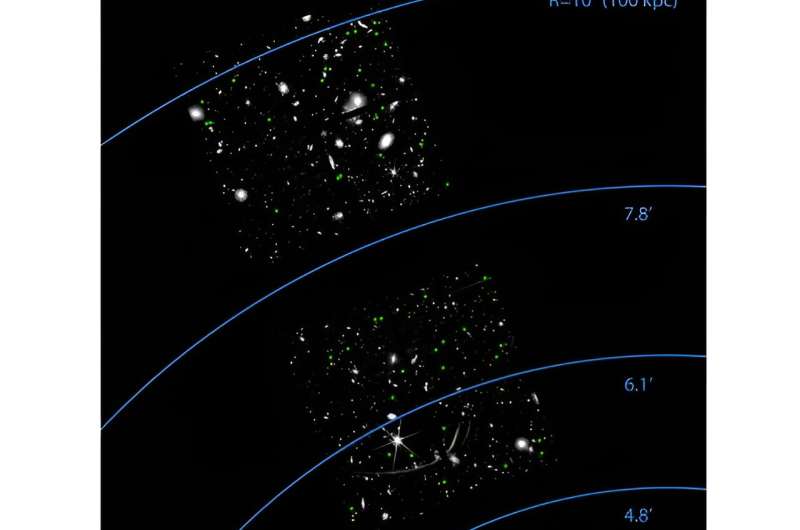October 30, 2023 report
This article has been reviewed according to Science X's editorial process and policies. Editors have highlighted the following attributes while ensuring the content's credibility:
fact-checked
preprint
trusted source
proofread
Astronomers detect an extended stellar halo surrounding galaxy Ark 227

Using the James Webb Space Telescope (JWST), astronomers have performed near-infrared observations of a dwarf galaxy known as Ark 227. The observational campaign led to the serendipitous discovery of an extended stellar halo around this galaxy. The finding was reported October 19 on the pre-print server arXiv.
Ark 227 (other designation PGC 28923) is a dwarf galaxy with red colors and elliptical morphology, at an estimated distance of between 85 and 114 million light years. The galaxy has a virial radius of about 330,000 light years, stellar mass of 2.7 billion solar masses and its halo mass is at a level of 200 billion solar masses.
Given that the environment of Ark 227 has not been studied in detail, a team of astronomers led by Charlie Conroy of Harvard-Smithsonian Center for Astrophysics (CfA) in Cambridge, Massachusetts, decided to investigate it with JWST's Near Infrared Camera (NIRCam) as part of the Blue Jay Survey.
"The Blue Jay Survey is a Cycle 1 JWST program. The primary scientific objective of the program is to obtain deep spectra of a mass-selected sample of galaxies at cosmic noon (1.7 < z < 3.5)," the researchers explained.
JWST revealed that Ark 227 is surrounded by an extended stellar halo with one or possibly two accretion shelves. One accretion shelf is at a distance of some 33,000–66,000 light years from the center of Ark 227, while the tentative shelf was identified at a distance of 160,000–320,000 light years from the center of the galaxy.
According to the authors of the paper, the existence of these accretion shelves suggests that Ark 227 experienced at least two minor mergers with dwarf galaxies. They suppose that Ark 227 accreted galaxies 10 times and 20 times less massive, with metallicities at a level of -0.8 and -1.2, respectively.
The researchers do not exclude the possibility that Ark 227 experienced multiple mergers with many lower-mass galaxies. However, they added that further observations of the field of Ark 227, which could lead to the detection of another accretion shelves, are required in order to confirm this.
Besides the detection of the extended halo, JWST observations also revealed the presence of an ultra-faint dwarf (UFD) galaxy associated with Ark 227. The newly-found galaxy, which received designation Ark227-UFD1, has a half-light size of about 750 light years and a mass of approximately 100,000 solar masses. In general, UFDs are the least luminous, most dark matter dominated, and least chemically evolved galaxies known to date.
In concluding remarks, the researchers added that Ark 227 may harbor several dozen UFDs with masses similar to Ark227-UFD1, as their study comprehensively investigated only a small part of the galaxy's stellar halo.
More information: Charlie Conroy et al, Detection of Accretion Shelves Out to the Virial Radius of a Low-Mass Galaxy with JWST, arXiv (2023). DOI: 10.48550/arxiv.2310.13048
Journal information: arXiv
© 2023 Science X Network





















